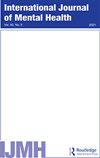埃塞俄比亚亚的斯亚贝巴公立医院医护人员倦怠综合征患病率及相关因素:一项横断面研究结果
IF 1.4
Q3 PSYCHOLOGY, CLINICAL
引用次数: 1
摘要
摘要背景倦怠是一种影响大量医护人员的情绪、精神和身体疲惫状态。在埃塞俄比亚,关于医护人员的倦怠综合症和与工作相关的决定因素的证据有限。因此,本研究旨在确定2019年埃塞俄比亚亚的斯亚贝巴公立医院医护人员的倦怠综合征患病率,并确定相关的风险因素。方法采用基于机构的横断面研究设计,时间为2019年3月10日至5月13日。采用分层随机抽样和简单随机抽样技术来选择参与者。采用标准化的Maslach倦怠量表人力服务调查问卷进行数据收集。将五百二十五名工人填写的有效问卷输入Epi Info第7版,并导出到SPSS第20版进行进一步分析。采用Logistic回归分析确定与倦怠综合征相关的因素。在p值≤0.05时获得显著水平。结果医护人员职业倦怠综合征的总患病率为31.6%(n = 166)(95%CI:27.836)。此外,42%(n = 218)的受访者情绪极度疲惫。此外,43%(n = 224)和45%(n = 234)的受访者分别经历了人格解体和低个人成就。年龄(AOR=0.4,95%CI:0.2,0.9)、长夜班工作(AOR=3.36,95%CI:1.83,6.2)、工作满意度(AOR=2.08,95%CI:1.3,3.3)和教育水平(AOR=6.33,95%CI:2.3-17.5)是与倦怠综合征显著相关的因素。结论本研究表明,高比例的医护人员患有倦怠综合征。教育程度低、夜班和白班工作时间长、工作不满意是倦怠综合征的重要决定因素。因此,以轮班工作管理、建立压力管理计划、改善人际关系和工作条件为重点的干预措施,以提高医护人员的工作满意度,对于减少这一问题至关重要。本文章由计算机程序翻译,如有差异,请以英文原文为准。
Prevalence of burnout syndrome and associated factors among health care workers at public hospitals in Addis Ababa, Ethiopia: Results from a cross-sectional study
Abstract Background Burnout is a state of emotional, mental, and physical exhaustion affecting a large number of health care workers. In Ethiopia, there is limited evidence about burnout syndrome and work-related determinant factors among health care workers. Therefore, this study aimed to determine the prevalence of burnout syndrome and identify the associated risk factors among public hospitals health care workers in Addis Ababa, Ethiopia, 2019. Methods Institution-based cross-sectional study design was employed from March 10 to May 13, 2019. Stratified random sampling with simple random sampling techniques was used to select participants. The standardized Maslach Burnout Inventory-Human service survey questionnaire was used to collect the data. Five-hundred twenty-five workers completed and valid questionnaire were entered into Epi Info version 7 and exported to SPSS version 20 for further analysis. Logistic regression analysis was used to identify factors associated with burnout syndrome. The significant level was obtained at p-value ≤ 0.05. Result The overall prevalence of burnout syndrome among health care workers in this study was found to be 31.6% (n = 166) (95%CI: 27.8, 36). Moreover, 42% (n = 218) of respondents were highly emotionally exhausted. In addition, 43% (n = 224) and 45% (n = 234) of respondents experienced depersonalization and low personal achievement, respectively. Age (AOR = 0.4, 95%CI: 0.2, 0.9), long night shift work (AOR = 3.36, 95%CI: 1.83, 6.2), job satisfaction (AOR = 2.08 95%CI: 1.3, 3.3), and educational level (AOR = 6.33, 95%CI: 2.3–17.5) were factors significantly associated with burnout syndrome. Conclusion This study shows that a high proportion of health care workers suffer from burnout syndrome. Low education level, long night- and day-shift work, and job dissatisfaction are significant determinant factors of burnout syndrome. Therefore, interventions focusing on shift work management, establishing stress management programs, and improving interpersonal relationships and working conditions to increase job satisfaction among health care workers are essential to reduce the problem.
求助全文
通过发布文献求助,成功后即可免费获取论文全文。
去求助
来源期刊

INTERNATIONAL JOURNAL OF MENTAL HEALTH
PSYCHOLOGY, CLINICAL-
CiteScore
3.80
自引率
20.00%
发文量
32
期刊介绍:
The official journal of the World Association for Psychosocial Rehabilitation, the International Journal of Mental Health features in-depth articles on research, clinical practice, and the organization and delivery of mental health services around the world. Covering both developed and developing countries, it provides vital information on important new ideas and trends in community mental health, social psychiatry, psychiatric epidemiology, prevention, treatment, and psychosocial rehabilitation.
 求助内容:
求助内容: 应助结果提醒方式:
应助结果提醒方式:


